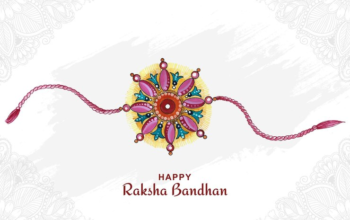When it comes to heating your home, designer radiators are an elegant and practical choice. They not only provide essential warmth but also enhance the aesthetic appeal of your living spaces. However, selecting the right designer radiators can be a bit overwhelming given the variety of styles, materials, and features available. This comprehensive guide will walk you through the essential considerations and factors to help you choose the perfect designer radiator for your home.
Understanding Designer Radiators
Designer Radiators in UK are a stylish alternative to traditional heating solutions. They come in a variety of shapes, sizes, and finishes, allowing them to blend seamlessly with any interior design. Unlike conventional radiators, which often prioritize function over form, designer radiators focus on both aesthetics and performance.
Key Factors to Consider When Choosing a Designer Radiator
Heat Output
The primary function of any radiator is to provide heat, so the first step in choosing a designer radiator is to determine the required heat output. This is usually measured in BTUs (British Thermal Units). To calculate the right BTU output for your room, consider the following factors:
Room Size: Larger rooms will require radiators with a higher BTU output.
Room Insulation: Well-insulated rooms retain heat better and may need a radiator with a lower BTU output.
Window Size and Type: Rooms with large windows or poor insulation may require a higher heat output.
You can use online BTU calculators or consult with a heating professional to determine the appropriate size for your space.
Design and Style
Designer radiators come in a range of styles, from minimalist and modern to ornate and classic. The style you choose should complement your interior design and reflect your personal taste. Here are a few popular styles:
Vertical Radiators: Ideal for smaller rooms or spaces with limited wall space. They take up less horizontal space while offering a sleek, contemporary look.
Horizontal Radiators: Suitable for larger walls, horizontal radiators are available in various designs and can serve as a focal point in a room.
Column Radiators: These radiators feature a classic design with multiple columns and are perfect for traditional interiors.
Designer Towel Radiators: Often used in bathrooms, these radiators serve a dual purpose of heating and drying towels.
Choose a design that not only fits your functional needs but also enhances the overall aesthetics of your room.
Material and Finish
The material and finish of a designer radiator play a significant role in both its performance and appearance. Common materials include:
Steel: Known for its durability and excellent heat output. Steel radiators are available in various finishes and designs.
Aluminum: Lightweight and highly efficient, aluminum radiators heat up quickly and are available in a range of modern designs.
Cast Iron: Offers a classic look and excellent heat retention. Cast iron radiators are ideal for traditional interiors but can be heavy and require more maintenance.
The finish of the radiator also impacts its appearance. Options include:
Glossy: Provides a sleek, modern look and is easy to clean.
Matte: Offers a more subtle appearance and can blend seamlessly with various interiors.
Chrome: Adds a touch of luxury and works well in contemporary settings.
Size and Dimensions
Selecting the right size and dimensions is crucial to ensure that your designer radiator fits well within your space and provides adequate heat. Measure the wall space where the radiator will be installed, and consider the radiator’s dimensions in relation to the room’s size. A radiator that is too large or too small can affect the room’s overall balance and heating efficiency.
Energy Efficiency
Energy efficiency is an important factor when choosing a designer radiator. Look for radiators with high heat output relative to their energy consumption. Modern radiators are designed to be more energy-efficient, helping you reduce heating costs and minimize your environmental impact. Features like thermostatic valves can also help control the temperature and improve energy efficiency.
Installation and Maintenance
Consider the installation process and maintenance requirements when selecting a designer radiator. Some radiators may require professional installation, especially if they are complex or require modifications to your heating system. Additionally, choose a radiator that is easy to maintain and clean. Models with removable covers or easy-to-access components can simplify maintenance tasks.
Budget
Designer radiators come in a wide range of prices, so it’s essential to establish a budget before you start shopping. While higher-priced models may offer advanced features or premium materials, there are plenty of affordable options that still provide excellent performance and style. Be sure to balance your budget with your desired features and design preferences.
Top Tips for Choosing the Perfect Designer Radiator
Match with Existing Décor: Consider how the radiator will fit with your existing décor and furniture. Choose a style and finish that complements the overall look of your room.
Consider Future Needs: Think about any future changes you might make to your space. Choosing a versatile and adaptable radiator can help ensure it remains suitable for your needs as your home evolves.
Consult a Professional: If you’re unsure about the right radiator for your space, consult a heating professional or interior designer. They can provide valuable insights and recommendations based on your specific requirements.
Customization Options
Many designer radiators offer customization options that allow you to tailor the radiator to your specific needs and preferences. Customization can include:
Color and Finish: Some manufacturers offer a range of colors and finishes beyond standard options, allowing you to match the radiator to your room’s decor or make a bold statement.
Size and Shape: Custom sizes and shapes can be designed to fit unique spaces or create a specific look. This is particularly useful for rooms with unconventional layouts or architectural features.
Additional Features: Features such as integrated towel rails or shelves can be added to certain radiators, providing extra functionality and convenience.
Conclusion
Choosing the perfect designer radiator involves considering various factors, from heat output and design to material and efficiency. By carefully evaluating these aspects and selecting a radiator that aligns with your needs and aesthetic preferences, you can enhance the comfort and style of your home. With the right designer radiator, you’ll enjoy not only effective heating but also a beautiful and functional addition to your living space.
Whether you’re renovating your home or simply looking to upgrade your heating system, taking the time to choose the right designer radiator will ensure you make a well-informed decision that adds both warmth and elegance to your space.


